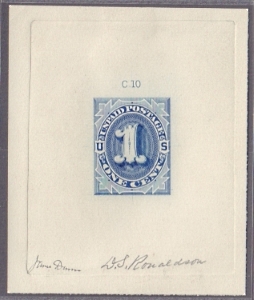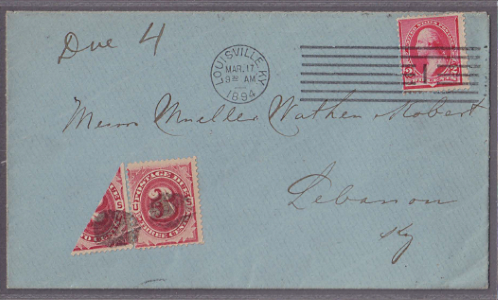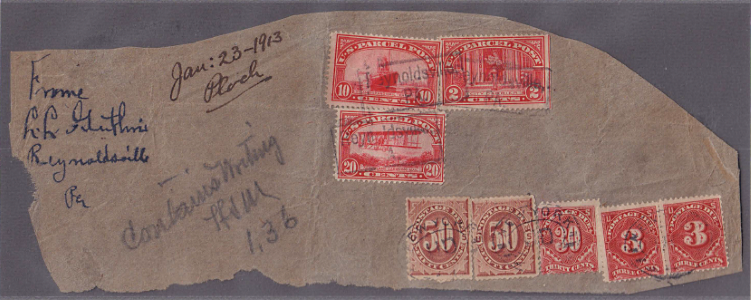Audio Clips

This exhibit includes speakers to listen to additional audio descriptions of several items. When viewing the exhibit on display, press the audio symbol near the piece.
On this page, you can listen or download the audio recordings included in the exhibit. Click the image to listen to or download the recorded descriptions of the pieces. Transcripts are included below the images.

Stamp essays are impressions of stamp designs that differ from the issued stamps. These essays are very similar to the final design, but read “Unpaid Postage” instead of “Postage Due.” Although the designs for all denominations are the same (with only the numeral changed) the dies were engraved completely independently, without the aid of a master die to copy areas. Every frame is slightly different – even the frames of the higher denominations, which were produced later.

This blue cover is the only certified non-philatelic use of a bisected Postage Due stamp, which pays 1¢ of the 4¢ due on this overweight letter. The back of the cover features an illustrated advertisement for Ferdinand F. Lutz, proprietor of the City Malt House and Louisville Malt House. The cover is addressed to Mueller, Wathem & Kobert, the makers of Rolling Fork Whiskey.

The cover here is the only reported example of large numeral postage due stamps on parcel post wrapping. Mailed from Reynoldsville, Pennsylvania to New York City, the parcel was charged an additional $1.36 due when it was uprated to first class mail. It was mailed by L.L. Guthrie, a traveling salesman from Reynoldsville. Guthrie worked for the Royal Baking Powder Company, located in New York City.

The advertised cover highlighted here was mailed from a Russian Mennonite settlement located in what is now Ukraine. In the 1870s, many Russian Mennonites immigrated to the United States and settled in Kansas. This cover is addressed to Newton, Kansas. Today, a statue in Newton commemorates the immigration of Russian Mennonites, who introduced Turkey Red Hard Wheat, an important crop, to the area.